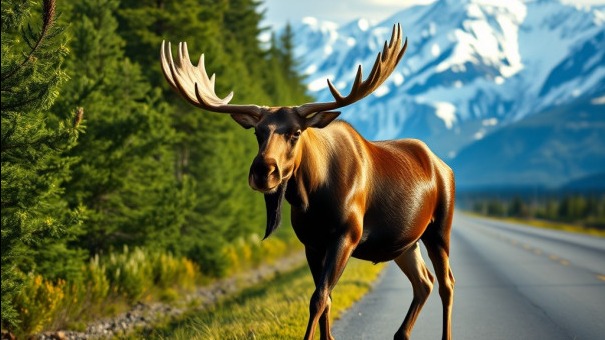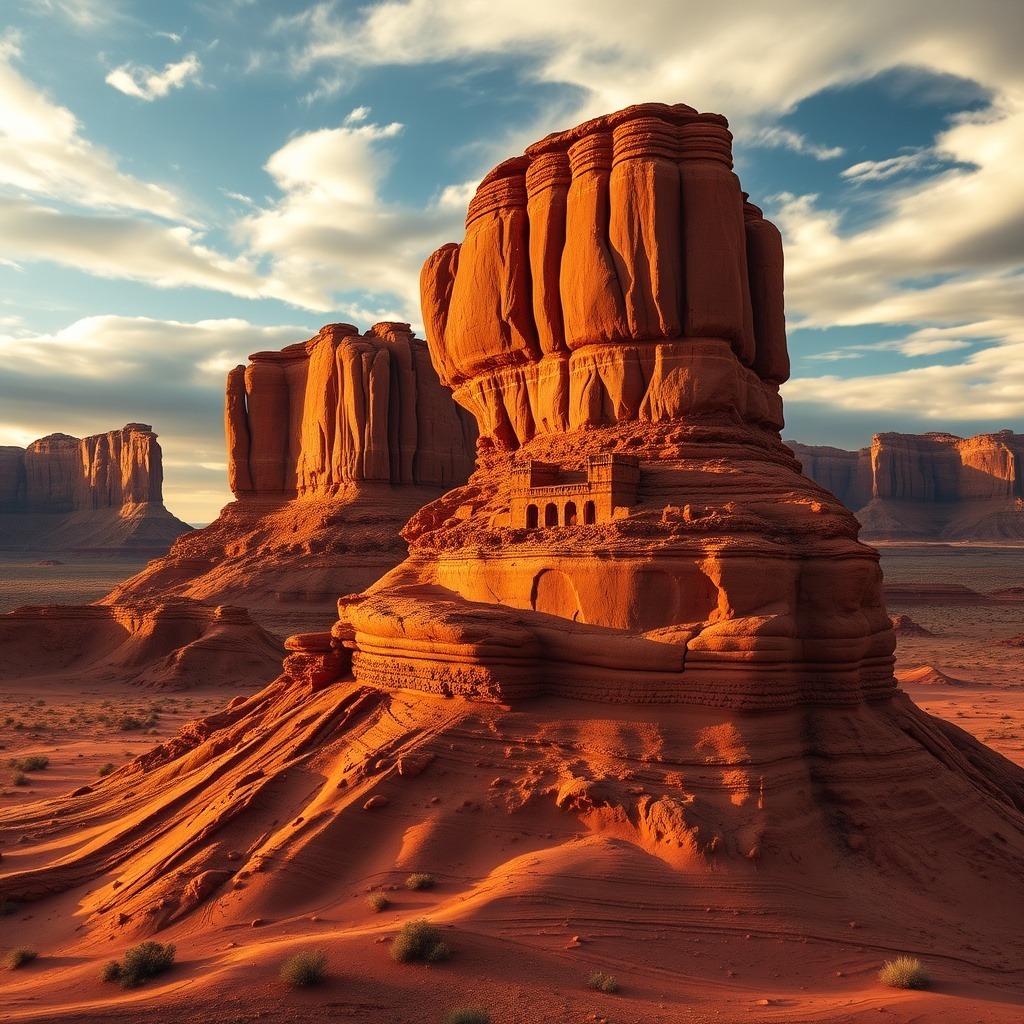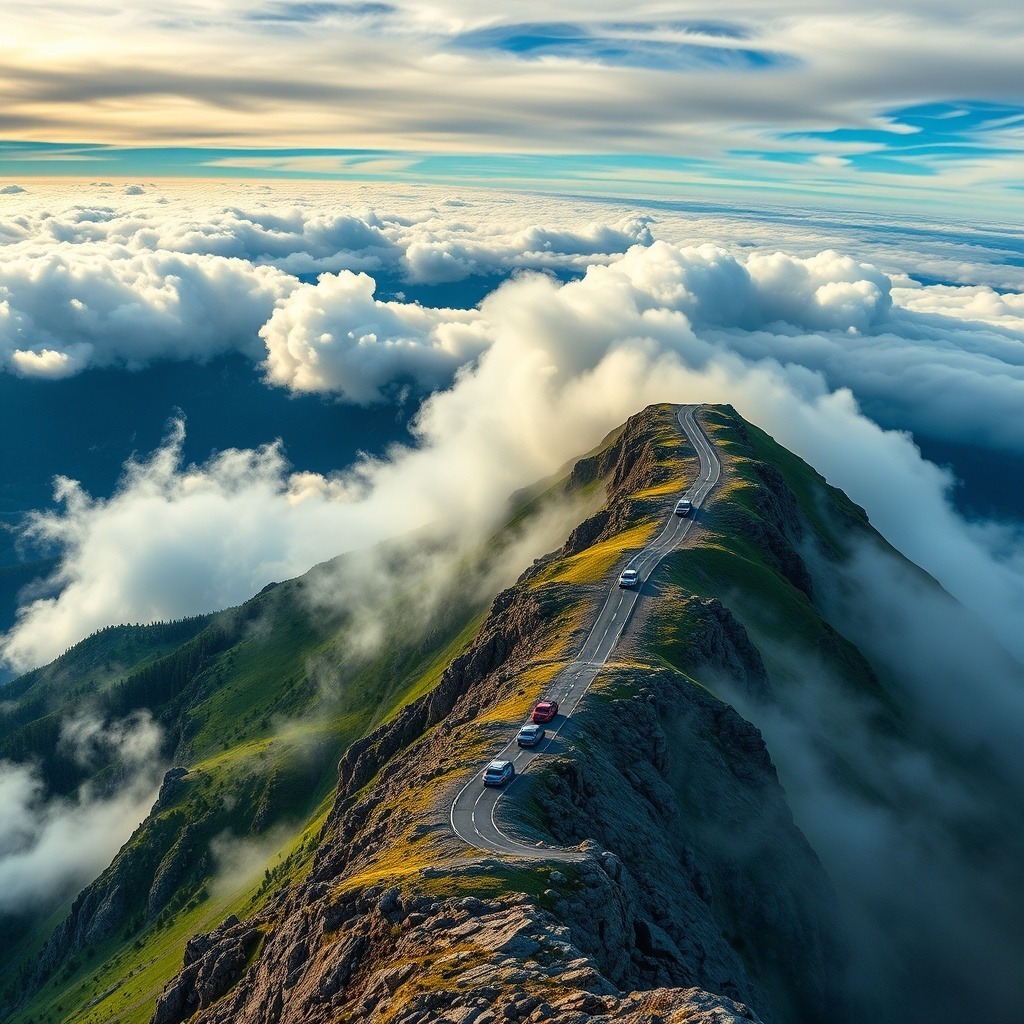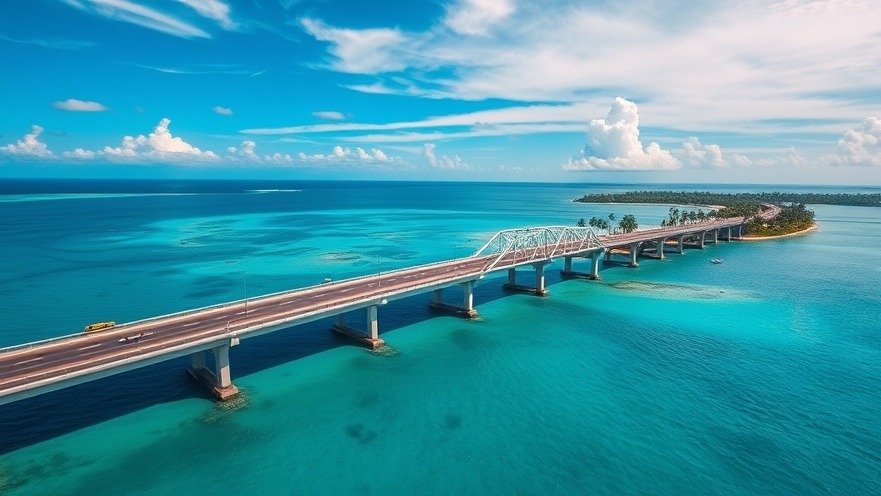
From Alaska to Florida, these serene and thrilling stretches ask you to take the scenic route
About 75 percent of Americans are expected to take a trip by car this summer season. Taking the beautiful route along such roads as Highway 101, seen above in Del Mar, California, can make the trip a lot more rewarding. " SEE AMERICA FIRST," declared an April 1, 1906, headline in the New York Times, motivating American travelers to expand their trip horizons beyond Europe. The slogan, debuted by Utah boosters a few months earlier to promote westward travel, got the Times' passionate endorsement: "In a fortnight the Far Easterner can actually go Far West and see things worth seeing, see numerous beautiful marvels by the way." Today, affordable flights to remote locations are plentiful, and it's easy for the American traveler to once again forget how much beauty and diversity exists in their own backyard.The great American trip has long offered a cure for such complacency, and this summer season must be no different: About 75 percent of Americans are expected to travel by car.
Looking for motivation for your own trip? These roadways are more than just pathways to some of the country's most compelling destinations-- they're unforgettable in their own right. With picturesque vistas, roadside attractions and historical interests aplenty, these routes call to mind another bygone travel slogan: Getting there is half the fun!
Alaska Highway, Alaska
En route to the permafrost of the Alaskan tundra, eagle-eyed vehicle drivers may identify caribou, moose and grizzly bears along the roadway.
In the early days of World War II, worries of a prospective attack on the Territory of Alaska spurred military authorities to produce the Alaska Highway. In simply nine months, more than 10,000 members of the Army Corps of Engineers completed over 1,500 miles of highway, a speed no doubt inspired by a healthy dosage of competitors.
Take the 95th Regiment: an under-equipped unit of Black engineers who staked their paychecks on a bet with their white counterparts that they could end up a bridge in five days. It just took them three and a half, and not due to the fact that of slapdash craftsmanship-- the Sikanni Chief River Bridge was the first long-term structure on the highway and represented half a century before arson destroyed it in 1992.
On the way to the permafrost of the Alaskan tundra, eagle-eyed vehicle drivers might find caribou, moose and grizzly bears along the road. Those crazy about eyeing bald eagles should plan a stop near the Canadian border at the Tetlin National Wildlife Refuge. Its wetlands work as a rest stop for 180 types of migratory birds, consisting of America's national bird, on their springtime journey towards the ice fields and glaciers at the roadway's northern most reaches.
Drivers who choose to follow their wingbeats north can check out a very different type of air travel at Mukluk Land in Tok, Alaska. The junkyard-turned-amusement park is home to "Santa's Rocket Ship" (a futuristically styled bus straight out of "The Jetsons") in addition to Skee-Ball, mini golf and-- what else?-- the world's largest mukluk (a sealskin boot).
Highway 101, California
" The 101" is a drivable California postcard, taking vehicle drivers past the Hollywood sign in Los Angeles, over the Golden Gate Bridge in San Francisco, and even through a redwood tree way up north in Klamath. (That last one requires a fast turn off on Exit 769.) The path provides an opportunity to not just see a few of the very best that California has to offer, but likewise smell and taste it, when the roadway cuts through the heart of Sonoma's white wine country.

Over 400 different wineries produce varietals from chardonnay to cabernet, which can be sampled in bring estates nestled among the stunning vineyards. Simply make certain to bring a designated driver.
Tired roadway trippers aiming to break up the journey do not need to stray far from the highway to find lodgings as unique as the sights along the way. Think about a stop at Oceano Dunes in Pismo Beach, where drivers can pull directly onto the sand and camp overnight at the water's edge. Those less crazy about roughing it can head up the roadway a couple of lots miles to the iconic Madonna Inn. This antique of 1950s maximalism boasts 110 spaces, each sporting an unique style, ranging from "Caveman" to "Swiss Chalet" and even "Sir Walter Raleigh."
Hana Highway, Hawaii
The Hana Highway is one of Maui's biggest tourist draws, with its 617 switchbacks hiding a few of the island's finest attractions.
The earliest version of the Hana Highway dates to the 16th century, when Native Hawaiians initially paved the road with lava blocks. Today, the route is one of Maui's greatest traveler draws, with its 617 switchbacks hiding a few of the island's finest destinations. A trek through a bamboo forest leads hikers to the 400-foot Waimoku Falls, while the natural swimming pools formed by waterfalls at Waikamoi Stream are a swimmer's dream. The highway even boasts its very own "Garden of Eden," an arboretum and arboretum offering nature tracks and glimpses of peacocks.
The overwhelming appeal of the Road to Hana has brought changes both positive and negative to the location. In the past 20 years or so, lots of local companies have popped up and are thriving along the highway. Places like Ono Farms in Kipahulu, which has all sorts of exotic fruit and trees, offer individuals the opportunity to try local things along the road. However
increased tourist makes it more important than ever to "travel pono"-- that is, respectfully and responsibly. Part of that effort is bearing in mind that the Hana Highway isn't simply a stunningly scenic drive, however also an important artery for the real people who live and work in East Maui every day. Locals might be driving much quicker, so if you see a regional individual driving behind you, you should pull over as soon as you can.
Going-to-the-Sun Road, Montana
Glacier National Park's historic Red Jammers, a fleet of 1930s ragtop trip buses, permit visitors to take in sensational mountain, lake and waterfall views from the road.
Countless years earlier, the area around Montana's Glacier National Park was submerged under ice a mile deep. Movement and melt carved the landscape throughout millennia, leaving the craggy peaks and frigid lakes that dot the area. However the most striking reminders of the area's prehistoric origins are the 25 glaciers that offer the park its name.

A few of the 7,000-year-old leviathans show up straight from Going-to-the-Sun Road, consisting of Jackson Glacier, which has its own beautiful overlook along the route. A mere 50 years earlier, Jackson Glacier was almost two times as big, serving as a consistent reminder of a more comprehensive story in the park: the glaciers have been diminishing for years, and more than 50 have disappeared completely since the mid-1800s.
Visitors may be flocking to Glacier to see these natural wonders before they vanish, however the fascination with glaciers was just as strong a century ago, when the federal government first began thinking about a permanent route to accommodate sightseers. Surveyors from the Bureau of Public Roads rappelled over cliffsides and faced down bears as they outlined the route, and the work was so grueling that labor turnover topped 300 percent. Today, the journey is not so treacherous-- in truth, you can even let somebody else do the driving.
The park's historic Red Jammers, a fleet of 1930s ragtop tour buses, permit visitors to take in stunning mountain, lake and waterfall views from the road. On the other hand, those bringing their own cars must beware: Reservations are needed for the road during peak hours. Glacier has progressively grown in popularity over the last 20 years to the point where rush hour has actually triggered hazardous conditions. As an outcome, Glacier has implemented an automobile reservation system. To avoid frustration, the park recommends visiting recreation.gov when planning a visit to get a reservation beforehand.
Path of the Ancients, Arizona/Colorado/New Mexico/Utah
Each state's part of the path provides something different.
Matching natural beauty with Indigenous history, the Trail of the Ancients winds its way around the sun-drenched Four Corners region where Arizona, Colorado, New Mexico and Utah converge. Though linked by a shared history, each state's part of the path uses something various.

In Arizona, visit Canyon de Chelly National Monument, among the earliest continually occupied places in the United States, to see fifth-century C.E. pictographs painted onto canyon walls that rise as high as 1,000 feet. Crane your neck as you take in Shiprock, a Navajo sacred site central to their development story, which increases quickly from the New Mexican desert flooring to a height taller than the Willis Tower. And in Utah, stretch your legs at Forrest Gump Point, a lonely stretch of U.S. Route 163 in Monument Valley where the movie's hero chooses to finally stop running.
Possibly most magnificent along the trail is Colorado's Mesa Verde National Park. Home to an ancient cliffside city constructed by Ancestral Puebloans around the 13th [5] century, Mesa Verde was the very first national park dedicated to "protect the works of man." Its most striking site is undoubtedly the Cliff Palace, a 150-room building that was once home to approximately 100 individuals.
Mount Washington Auto Road, New Hampshire
The automobile road is billed as "America's earliest manmade destination."
" THIS CAR CLIMBED MT. WASHINGTON," declares a bumper sticker common throughout New England. It's an indication that the car has summited the Northeast's highest mountain, an ascent of 4,600 vertical feet that climbs through the clouds and into blue sky, revealing scenic views from the White Mountains to the Atlantic Ocean. Even throughout the winter months, when the road is closed to public traffic, aiming vehicle mountaineers can still take pleasure in a ride to the summit in the SnowCoach (a van with tracks for wheels), and Nordic ski or snowshoe down. But make certain to bundle up-- last year, Mount Washington taped the coldest wind chill in U.S. history of minus 108 degrees Fahrenheit.
The automobile roadway is billed as "America's oldest manmade destination," and its storied history is as much a draw as its natural appeal.

Construction started on the road throughout the presidency of Franklin Pierce, with work finished throughout Lincoln's very first term. Over the years, the path developed a track record as an automotive proving ground. The very first time journey to the summit saw an 1899 Stanley Locomobile post a then-blistering time of just over two hours, a record modern-day weekend warriors shatter on a daily basis in family minivans. Still, that preliminary time trial influenced among the oldest auto races in America, the Mount Washington Hillclimb, which has been sporadically held along the roadway because 1904. However wannabe racers may have their work cut out for them: The existing record time of 5 minutes and 28.67 seconds may be slightly more difficult to beat than the 1899 original.
Abroad Highway, Florida
The southernmost highway in the continental United States brings U.S. Route 1 over the turquoise waters of the Florida Keys via 42 low-slung bridges.

In 1905, oil magnate Henry Flagler revealed his strategies to build a railroad linking Key West to the Florida mainland. When the line opened seven years later on, the job as soon as lampooned as "Flagler's Folly" was hailed as the "Eighth Wonder of the World." But the accomplishment would be temporary. The 1935 Labor Day Hurricane struck with an intensity that would be unequaled for the next half-century, removing 40 miles of track and dooming the train for good. The misfortune for train tourists nevertheless showed an advantage for drivers: Florida acquired what was left of the facilities and repurposed it to create the Overseas Highway.
Today, the southernmost highway in the continental United States carries U.S. Route 1 over the turquoise waters of the Florida Keys via 42 low-slung bridges. Beneath the underpasses, the Lower 48's largest reef offers some of the country's best snorkeling, however be alerted: Sightings of crocodiles and alligators might be better enjoyed from the driver's seat.
Those craving a wildlife adventure may wish to seek out the Turtle Hospital, situated at Mile Marker 48.5 on the Overseas Highway. Because its founding in 1986, the medical facility has actually assisted nurse over 3,000 sea turtles back to health, and the general public is welcomed daily for guided academic tours.
Planning Your Next Trip?
Check out some great travel deals.
 Add Row
Add Row  Add
Add 



Write A Comment